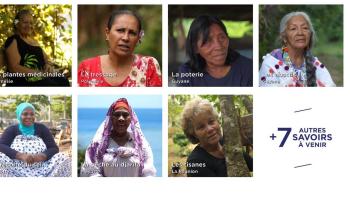Poaching poses a major threat to the survival of numerous species – many of which are endangered. How to tackle it? In Libreville, the National Agency for the Preservation of Nature has just set up a wildlife genetic analysis laboratory financed by AFD and the World Bank. By analyzing DNA samples, it is now possible to trace and identify those involved – and prosecute offenders.
It’s a new front in the fight against poaching: the Wildlife Genetic Analysis Center has just opened in Libreville – a first in Central Africa.
Inaugurated on 11 March, this new laboratory is based at the National Agency for the Preservation of Nature, which implements the Government’s policy on the protection, management and development of national biodiversity. It receives co-financing from AFD under the Elephants project to tackle poaching and ivory trafficking in Gabon and the sub-region, and from the World Bank under the GeFaCHE (Wildlife and Human-Elephant Conflicts Management) project.
The aim is to enhance scientific knowledge of wildlife and combat the illegal hunting and sale of animals, two missions made possible through the genetic analysis of the DNA samples (ivory, hair, scales and fecal matter) collected from local wildlife.
DNA, a powerful investigative tool
“The creation of a place like this marks the continuation of the professionalization of the fight against poaching,” says Alice Bardet, Agriculture, Forestry and Environment project officer at AFD. The use of wildlife DNA is highly valuable in the tracking of those involved in illegal hunting, and is a powerful tool in the range of techniques that can be applied in an investigation on a wildlife crime. It’s also a method recommended by the Convention on International Trade in Endangered Species of Wild Fauna and Flora (CITES).
The identification of a protected species from a sample seized from clothing or a weapon can help in solving the crime and identifying those responsible. With the DNA of the slaughtered animal, it is possible to prove the link between a suspect and the wildlife products seized.
On the trail of poachers
In line with international standards, the wildlife genetic analysis laboratory has two full-time technicians. They have specialized equipment, including three standard PCR machines - Polymerase chain reaction, a technique used to amplify small segments of DNA. The lab also includes a real-time PCR machine and a storage room for reference samples. They can analyze some 250 samples a week.
Such methods also help the Libreville laboratory help identify poaching networks, which are often transnational. “The analysis of an ivory DNA sequence can determine where the elephant was hunted. By working at international level, it becomes possible to identify precisely where an elephant tusk found in Asia comes from and trace the network,” says Alice Bardet.
As poaching pays no heed to borders, the initiative is generating a lot of interest in neighboring countries, such as Cameroon, which is also committed to the fight against poaching.














